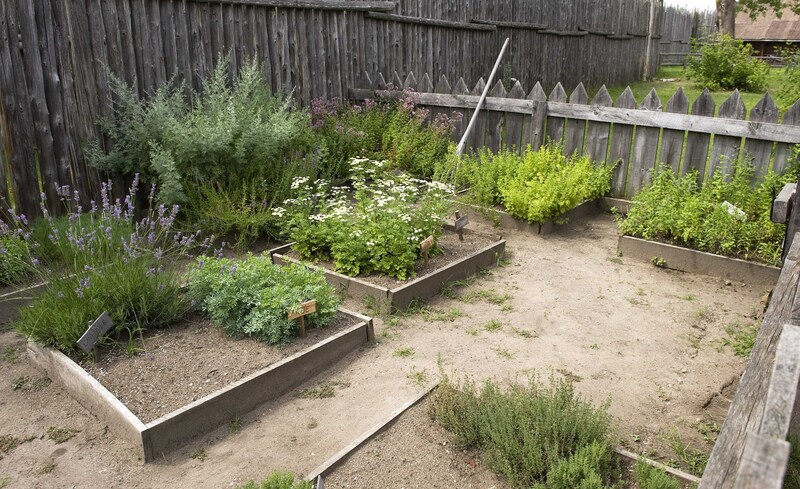The Future of Urban Greenery is Vertical Gardening
Posted on 26/08/2025
The Future of Urban Greenery: Unlocking the Potentials of Vertical Gardening
The urban landscape is rapidly evolving. With a growing population, shrinking green spaces, and a severe need for sustainable solutions, cities around the world are turning to innovative ideas to stay livable and healthy. At the forefront of this movement is the remarkable trend of vertical gardening. This article provides an in-depth exploration of vertical gardening, discussing its benefits, applications, environmental impact, and why it truly represents the future of urban greenery.

What is Vertical Gardening?
Vertical gardening involves growing plants on upright surfaces, using structures such as walls, fences, or specially designed systems. Unlike traditional horizontal gardens, these gardens go upwards, transforming barren or unused spaces into lively oases. Popular examples include green walls on skyscrapers, balcony gardens, and living fences.
The Evolution of Vertical Greenery
- Ancient Roots: Vertical gardening traces back to ancient times with the Hanging Gardens of Babylon.
- Modern Innovations: Today, advanced hydroponics, aeroponics, and modular green wall systems make it easier than ever.
- Why the Shift? Urbanization, pollution, and a lack of horizontal space push cities to seek upward solutions.
Why Urban Greenery Needs to Go Vertical
Addressing the Urban Space Crisis
Cities suffer from limited land availability for parks and gardens. Vertical gardens maximize greenery per square meter by transforming walls and vertical structures into lush, productive ecosystems. They allow for landscaping in places traditionally considered unplantable, such as:
- Building facades
- Balcony railings
- Indoor walls of offices and homes
This innovation enables urban dwellers to reclaim nature within a concrete jungle without sacrificing valuable ground space.
Environmental Benefits of Vertical Gardening Solutions
Beyond aesthetics, vertical gardens in urban environments offer a myriad of ecological advantages:
- Air purification: Foliage filters pollutants and releases oxygen, improving air quality.
- Temperature regulation: Green walls provide insulation and cooling, lowering urban heat islands.
- Noise reduction: Dense plant layers absorb sound, reducing city noise pollution.
- Biodiversity enhancement: Different plant species create habitats for insects and birds within cities.
Key Components and Variations of Vertical Gardening
Modular Systems
These modular vertical gardens use prefabricated units that can be rearranged and customized, perfect for both homeowners and urban planners.
Hydroponic Green Walls
A soilless method, hydroponic vertical gardens employ water and nutrient solutions, making them cleaner and lighter. This technique enables the cultivation of vegetables, herbs, and flowers indoors and outdoors.
Pocket Planters and Trellises
Fabric pockets or lattice frameworks provide affordable and flexible options for low-maintenance vertical gardening in limited spaces.
The Role of Vertical Gardening in Sustainable Urban Design
Integrating Green Infrastructure
Modern city planners are weaving vertical gardens into urban design, as part of a broader movement towards sustainable cities:
- Green office towers with entire living facades
- Pocket parks on the sides of bus stops and bridges
- Green roofs connected seamlessly to living walls
By integrating vertical greenery, cities can reduce building energy consumption, improve stormwater management, and support urban biodiversity.
The Economic Benefits of Vertical Gardening in Cities
Increasing Property Value
Properties with integrated green walls and vertical gardens enjoy higher real estate values and more aesthetic appeal. Commercial properties benefit from increased foot traffic due to attractive exterior features.
Reducing Energy Costs
Vertical green installations insulate buildings, reducing reliance on air conditioning and heating. The U.S. Department of Energy notes that green walls can slash overall energy bills by up to 30% in some cases.
Bolstering Urban Agriculture
Growing food vertically means fresh produce can be harvested within city limits, shortening supply chains and increasing food security. Cafes and restaurants utilizing wall gardens for herbs and vegetables see lower costs and fresher ingredients.
High-Impact Examples: Vertical Greenery Across the Globe
Singapore: The Greenest City Skyline
Singapore is a global leader in vertical gardening innovation. Skyscrapers are wrapped in lush greenery, with over 100 hectares of "skyrise greenery" covering hotels, malls, and residences. The Oasia Hotel Downtown features 21,000 square meters of vertical gardens, providing habitat, cooling, and a stunning urban landmark.
Milan: Bosco Verticale
The famed "Vertical Forest" buildings in Milan incorporate more than 20,000 trees and shrubs on residential towers. These living high-rises reduce pollution, shield residents from noise, and inspire similar projects worldwide.
New York: Urban Farming Skyscrapers
Brooklyn's Gotham Greens operates greenhouse rooftops and vertical farm systems, producing fresh greens year-round for city dwellers while conserving water and space.
Latest Trends in Urban Vertical Gardening
- Smart Sensors & Automation: Technology monitors soil moisture, lighting, and plant nutrition for optimal growth.
- Artistic Green Walls: Unique living murals and patterns add cultural value to public spaces.
- Edible Green Walls: Restaurants and schools grow herbs, vegetables, and fruits in vertical gardens for direct consumption.
- Biophilic Design: Incorporating natural elements in architecture improves well-being and productivity for building occupants.
How Vertical Gardening Transforms Urban Lifestyles
Health and Wellbeing
Vertical greenery brings nature close to people, enhancing psychological well-being, reducing stress, and improving air quality. Offices with living walls report lower employee absenteeism and higher productivity.
Food Security & Urban Resilience
Urban vertical farms deliver fresh produce directly to local communities, reducing dependency on distant farmlands and transportation networks. This localized urban agriculture fosters resilience in times of crisis.
Community Engagement
Neighborhood projects involving shared vertical gardens encourage social inclusion, knowledge sharing, and a deeper connection with nature among urbanites.
Addressing the Challenges: What's Next for Urban Vertical Gardening?
While the benefits are profound, the future of vertical gardens in cities isn't without hurdles:
- Cost: Installation and maintenance still require investments, though costs are dropping rapidly with technology.
- Structural Requirements: Not all existing buildings can bear the added weight without retrofitting.
- Plant Selection: Matching the right plants to specific environmental conditions is crucial for success.
- Maintenance: Proper irrigation, pest control, and pruning are essential for long-term performance.
The Next Generation of Vertical Green Solutions
Integration with Renewable Energy
The combination of vertical gardening systems and photovoltaic panels offers energy-efficient, sustainable building envelopes. Some innovative projects are combining green walls with solar power, further reducing a building's environmental footprint.
DIY and Community Projects
Accessible kits and community grants make vertical gardening for urban homes and schools easier than ever. Educational programs cultivate the next generation of green innovators and gardeners.

How to Start Your Own Urban Vertical Garden
Step-by-Step Beginner's Guide
- Choose Your Location: Assess available walls, balconies, or fences.
- Select the Right Plants: Consider light, wind, temperature, and maintenance needs.
- Pick a System: Options range from pocket planters and trellises to hydroponic kits and modular panels.
- Set Up Irrigation: Automated drip systems ensure consistent moisture.
- Regular Maintenance: Inspect for pests, nurture growth, and trim as needed for healthiest results.
Even with limited space, the right approach allows anyone to participate in the vertical greening of our urban future.
Conclusion: The Skyline Will Bloom
As cities strive to become healthier and more sustainable, the role of vertical gardening in urban environments will only become more prominent. From mitigating heat and pollution to providing fresh food and inspiring communal connections, the benefits of vertical green solutions are undeniable.
The future of urban greenery is vertical gardening, transforming the concrete jungles of the past into the living, breathing cities of tomorrow. Whether experienced on a skyscraper or a residential balcony, vertical gardens are set to redefine urban living for generations to come.

